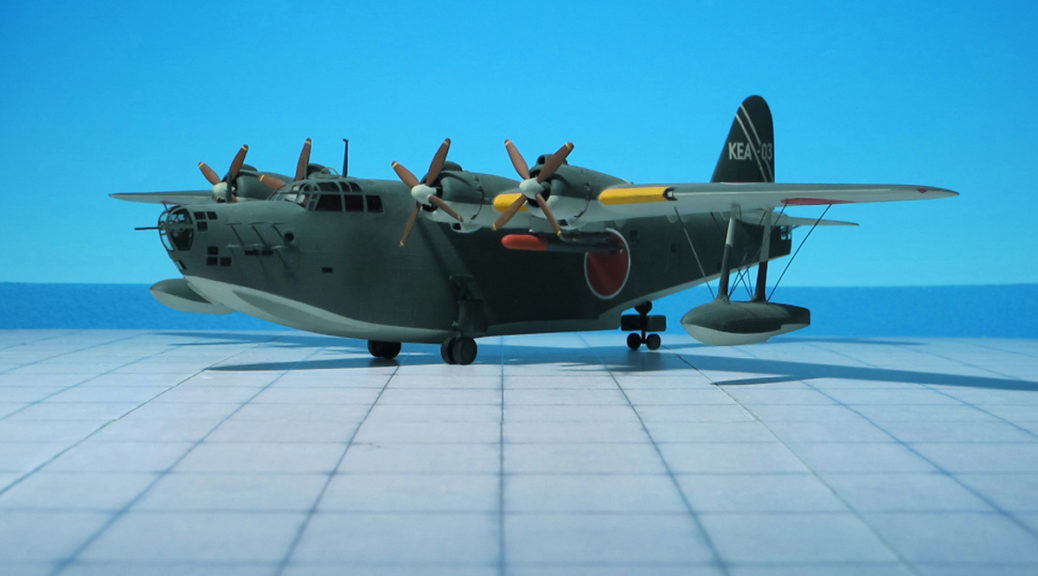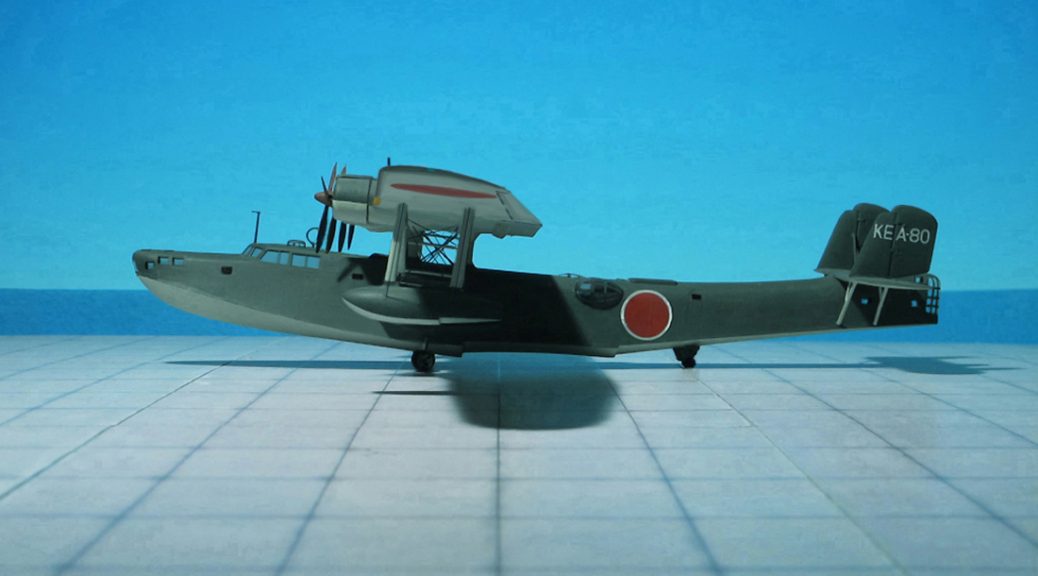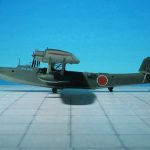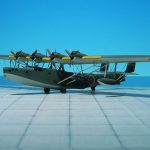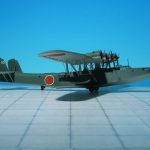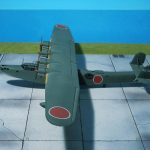TYPE: Long-range Maritime Reconnaissance and Bomber Flying Boat
ACCOMMODATION: Crew of ten
POWER PLANT: Four Mitsubishi MK4Q “Kasei 22” radial engines, rated at 1,380 hp each
PERFORMANCE: 290 mph at 16,400 ft
COMMENT: The Kawanishi H8K “ Type 2 Large-sized Flying Boat) was an Imperial Japanese Navy flying boat used during WW II for maritime patrol duties. The Allied reporting name for the type was “Emily”.
At the same time the type’s predecessor, the Kawanishi H6K, was going into service in 1938 the Navy ordered the development of a larger, longer-ranged patrol aircraft under the designation “Navy Experimental 13-Shi Large-size Flying Boat”. The result was a large, shoulder-winged design that is widely regarded as the best flying boat of the war. Despite this, initial development was troublesome, with the prototype displaying terrible handling on the water. Deepening of the hull, redesigning of the planing bottom and the addition of spray strips under the nose rectified this. Two further prototypes— actually pre-production aircraft— joined the development program in December 1941. The IJNAF accepted the first production version as the H8K1, “Navy Type 2 Flying Boat, Model 11”, of which 14 would be built.
The H8K1 entered production in 1941 and first saw operational use on the night of 4 March 1942 in a second raid on Pearl Harbor. Since the target lay out of range for the flying boats, this audacious plan involved a refueling by submarine, some 900 km north-west of Hawaii. Two planes from the Yokohama Kokutai (Naval Air Corps) attempted to bomb Pearl Harbor, but, due to poor visibility, did not accomplish any significant damage.
Six days after the second Pearl Harbor raid one of the “Emily’s” was sent on a daylight photo-reconnaissance mission of Midway Atoll. It was intercepted by radar directed Brewster F2A-3 “Buffalo” fighters of Marine Corps squadron VMF-221 and shot down.
After serving as an engine test bed for the Kasei 22 powered H8K2, the original H8K1 experimental aircraft was again modified as the prototype for a transport version of the H8K series. The deep hull made possible the installation of two decks, the lower deck extending from the nose to the rear hull step and the upper extending from the wing centre-section to the rear of the hull. Accommodation was provided for either twenty-nine passengers or sixty-four troops, the armament was reduced to one flexible 13mm Type 2 machine gun in the nose turret and one 20 mm Type 99 Model 1 cannon in the tail turret. A total of thirty-six H8K-2L transport flying boat “Seiku” (“Clear sky) were built between 1943 and 1945 and exclusively operated by Naval transport units.
An improved version of Kawanishi H8K2 “Type 2 Flying Boat, Model 12” (Nishiki Hikōtei 12-gata) soon appeared, and it’s extremely heavy defensive armament earned it deep respect among Allied aircrews. The H8K2 was an upgrade over the H8K-1, having more powerful engines, slightly revised armament, and an increase in fuel capacity. They were used on a wide range of patrol, reconnaissance, bombing, and transport missions throughout the Pacific war. In mid 1943, many aircraft were equipped with Mark IV Model 1 ASV radar. This was to be the definitive variant, with 112 aircraft produced.
Even though far fewer Kawanishi H8Ks were built than contemporary British Short “Sunderlands” or American Consolidated PBY “Catalinas”, the Japanese flying-boat emerged from conflict as the most outstanding water-based combat aircraft of the second World War (Ref.: 1, 24).
